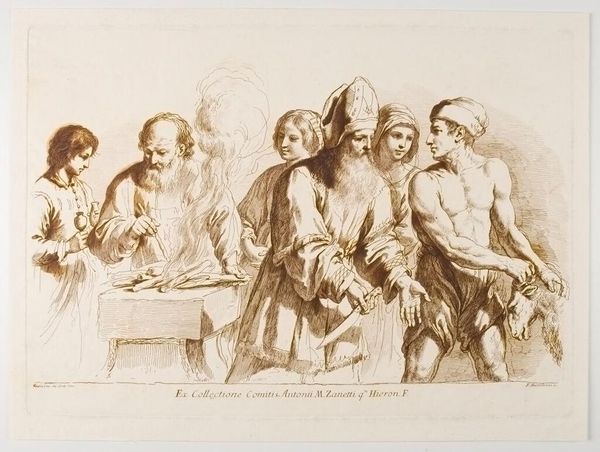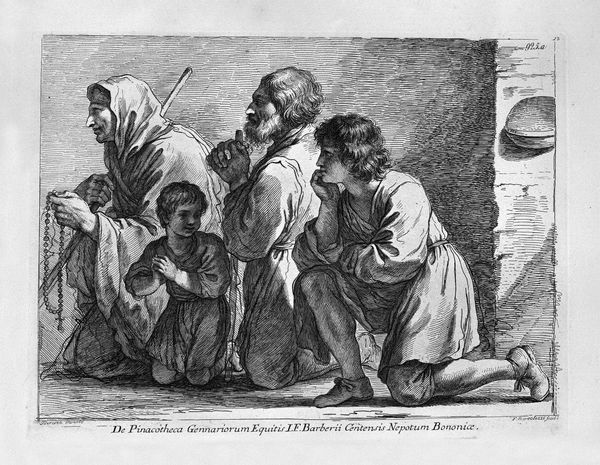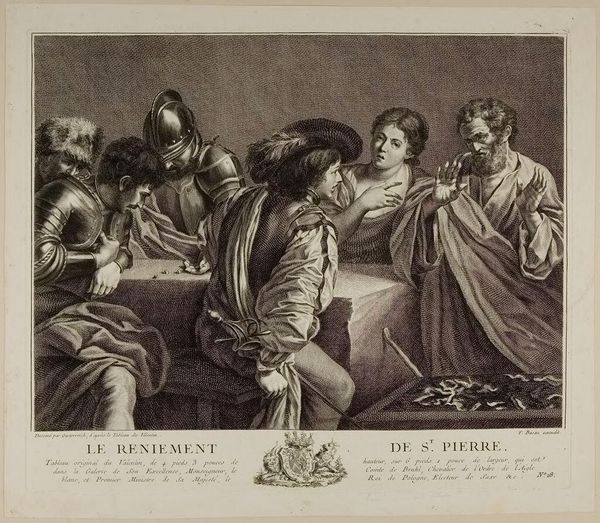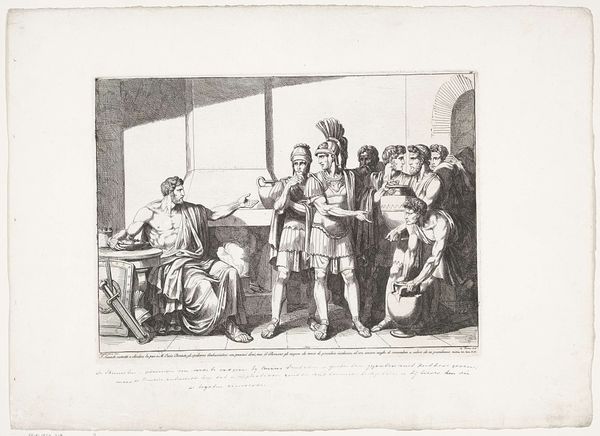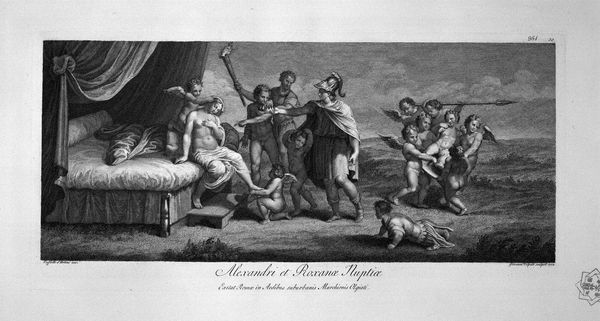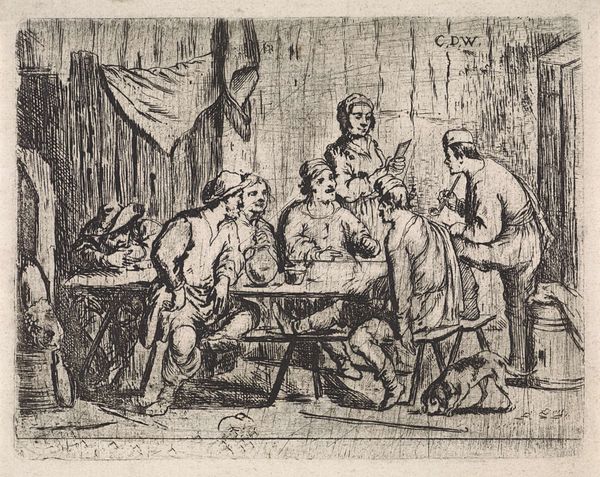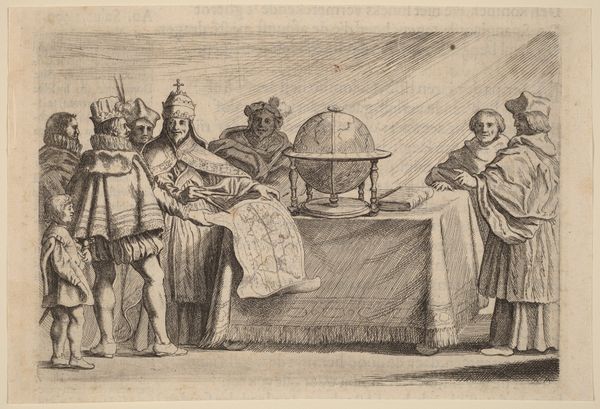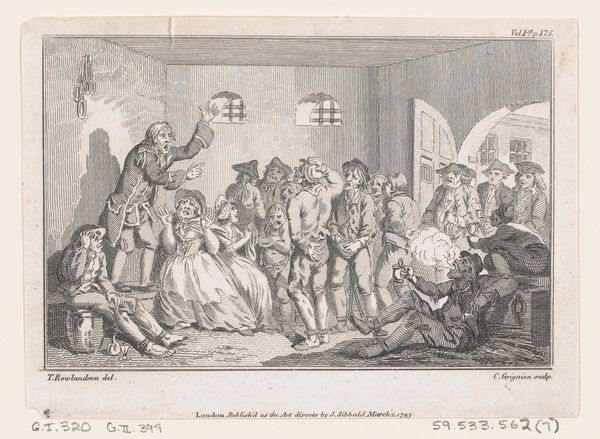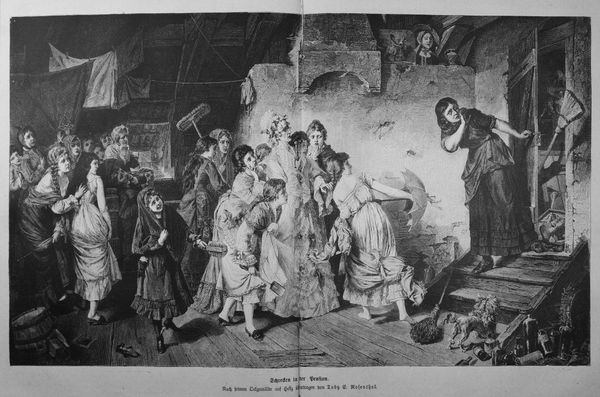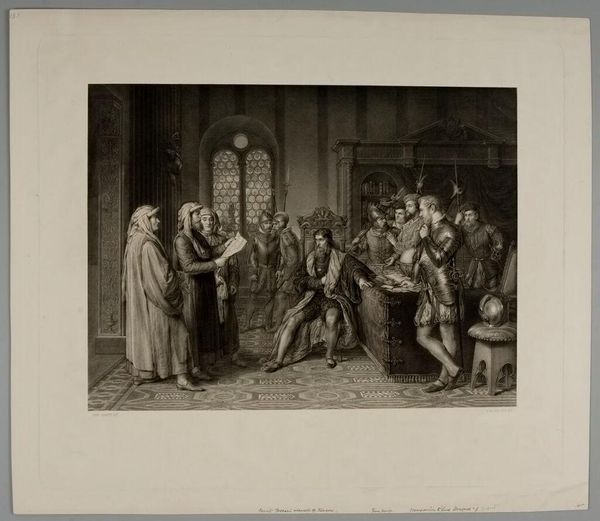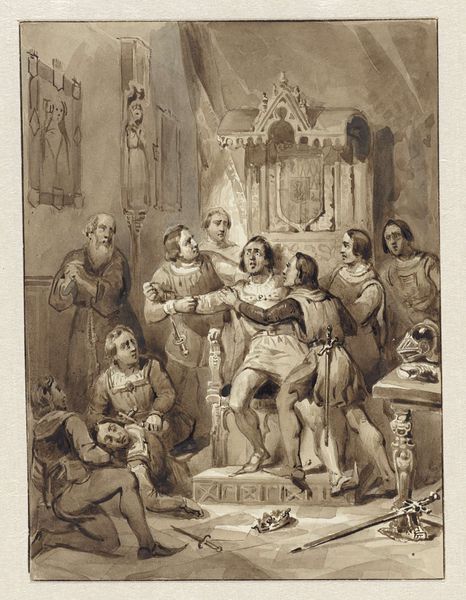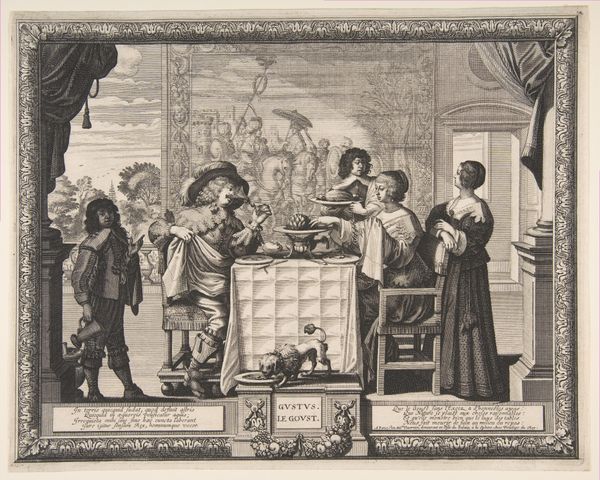
drawing, print, paper, engraving
#
drawing
#
allegory
#
baroque
# print
#
figuration
#
paper
#
christianity
#
history-painting
#
engraving
#
realism
Copyright: Public domain
This print, "A Sacrifice," was made by Giovanni Battista Piranesi in 18th-century Italy. Piranesi is best known for his etchings of Roman ruins and architectural fantasies. Here, he depicts a scene of ritual sacrifice, complete with a robed priest, attendants, and an animal offering. It's not a simple record, but a construction that carries social meaning. Piranesi, like many artists of his time, was deeply engaged with the classical past, and we can read this print as a reflection on the origins of religious and social institutions. By presenting this invented scene as part of a collection, Piranesi is also making a comment on the institutions of art and collecting. To fully understand Piranesi's intentions, we would need to delve into the visual culture of 18th-century Italy, examining the artist's sources, his patrons, and the intellectual debates of his time. Art history relies on this kind of contextual analysis to unlock the full meaning of a work.
Comments
No comments
Be the first to comment and join the conversation on the ultimate creative platform.
